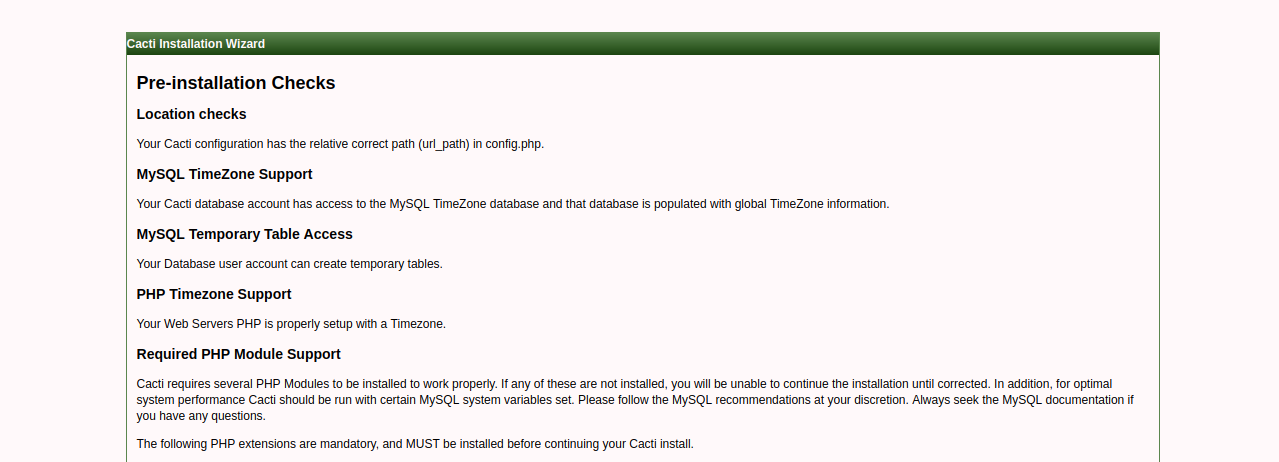

Then, import the mysql test data timezone.sql file into the mysql database. MariaDB > GRANT ALL ON cactidb.* TO IDENTIFIED BY 'passwd123'

We now need to create a database and user for cacti and grant all the necessary privileges to the cacti user. Start and enable snmpd with the commands: $ sudo systemctl start snmpd
INSTALL CACTI ON UBUNTU 16.04 INSTALL
$ sudo dnf install -y net-snmp net-snmp-utils net-snmp-libs rrdtool Now we will install SNMP and RRDtool, which are required for gathering and analyzing system metrics. $ sudo dnf module reset phpĪfter that, install PHP and required extensions with the commands below: $ sudo dnf install sudo dnf install -y php php-Įnable the php-fpm service by executing the command: $ sudo systemctl enable -now php-fpm Then, enable the DNF module for PHP installation. First, add the Remi repository: $ sudo dnf install dnf-utils Next, start and enable mariadb to start on boot as shown: $ sudo systemctl start mariadbĬacti is written in PHP, and therefore, we need to install PHP and the required PHP dependencies.


$ sudo dnf install -y mariadb-server mariadb We will install and use Mariadb as our database server. #systemctl restart rvice #systemct restart rvice #systemctl restart, start and enable the webserver with the commands: $ sudo systemctl start httpdĬacti require its own database to store the data it collects. Now make sure that all necessary services are active and running. # apt-get install cacti cacti-spine So far, cacti installation and configuration settings are complete. Issue the following command to start installing the Cacti package, and then press “Y” to continue. # apt-get install snmp snmpd rrdtool Step 3: Install Cacti on Ubuntu 16.04: Now we can start installing Cacti because we have completed all the necessary dependencies. Run the following command to install these packages on your Ubuntu 16.04 server, then press the “Y” key to continue. Step 2: Install SNMP, SNMPD and RRDtools: We need to install some other necessary packages to set up the function To complete Cacti and monitor the “local host” where cacti is installed, you need to install and configure the service “snmpd”. Step 1: Prerequisite: The basic requirement of Cacti is that you must install the LAMP stack on the server before starting to install Cacti. By default, you can have daily, weekly, monthly, and yearly charts. This means that one can obtain accurate figures for the most recent recorded data, while figures based on very old data are approximate average values. The number of records in the “.rrd” file will never increase, which means that old records will often be deleted. RRDtool is developed using the “C” programming language, and it stores the collected data in a “.rrd” file. RRDtool is a program developed by Swiss Tobi Oeticker, who is already the creator of the famous MRTG. It can use SNMP, shell or perl scripts to draw network bandwidth graphs. Cacti is a complete network graphics solution, designed with RRDTool’s data storage and graphics functions. Hello everyone, and welcome to our article today about another open source network monitoring tool Cacti.


 0 kommentar(er)
0 kommentar(er)
